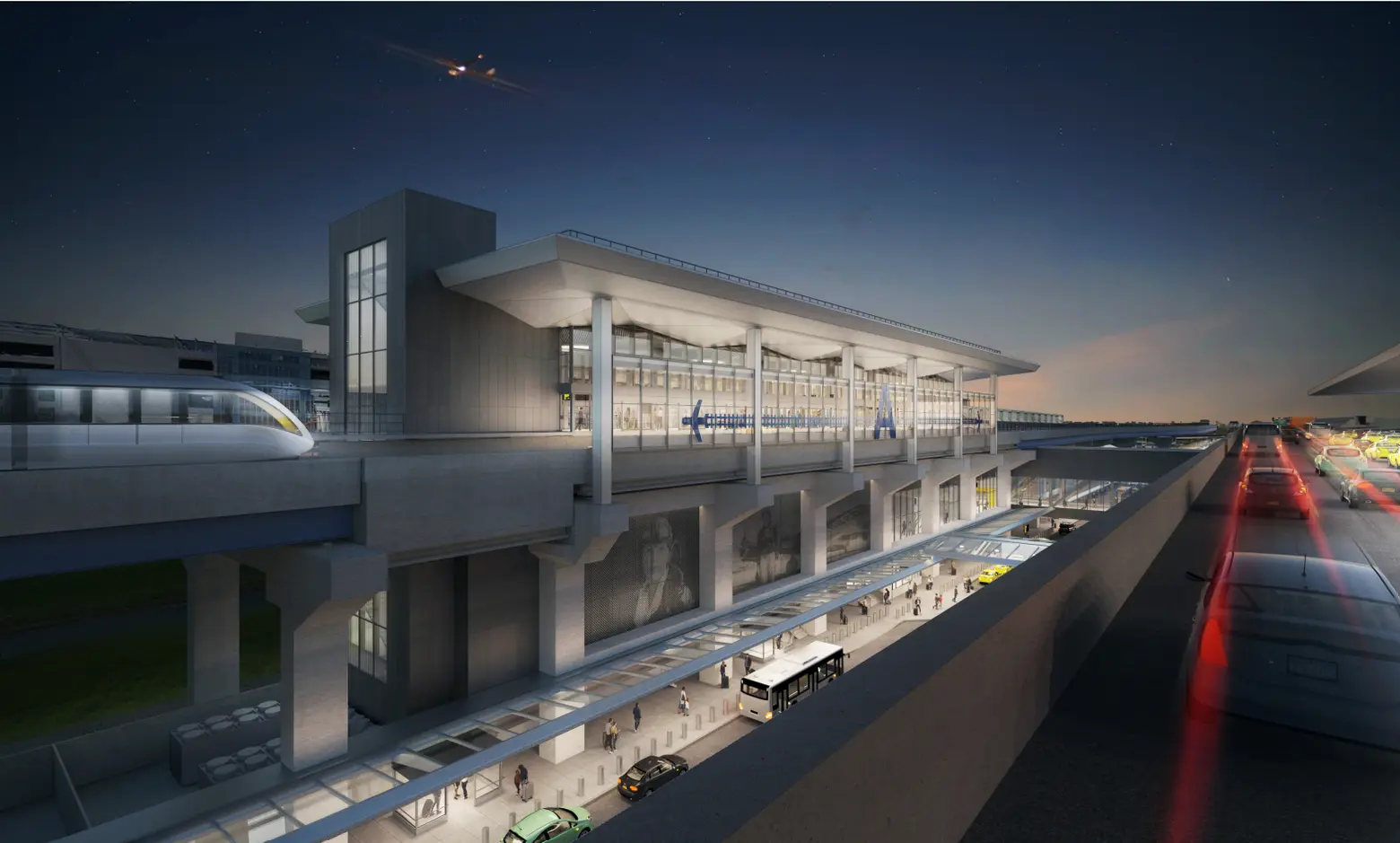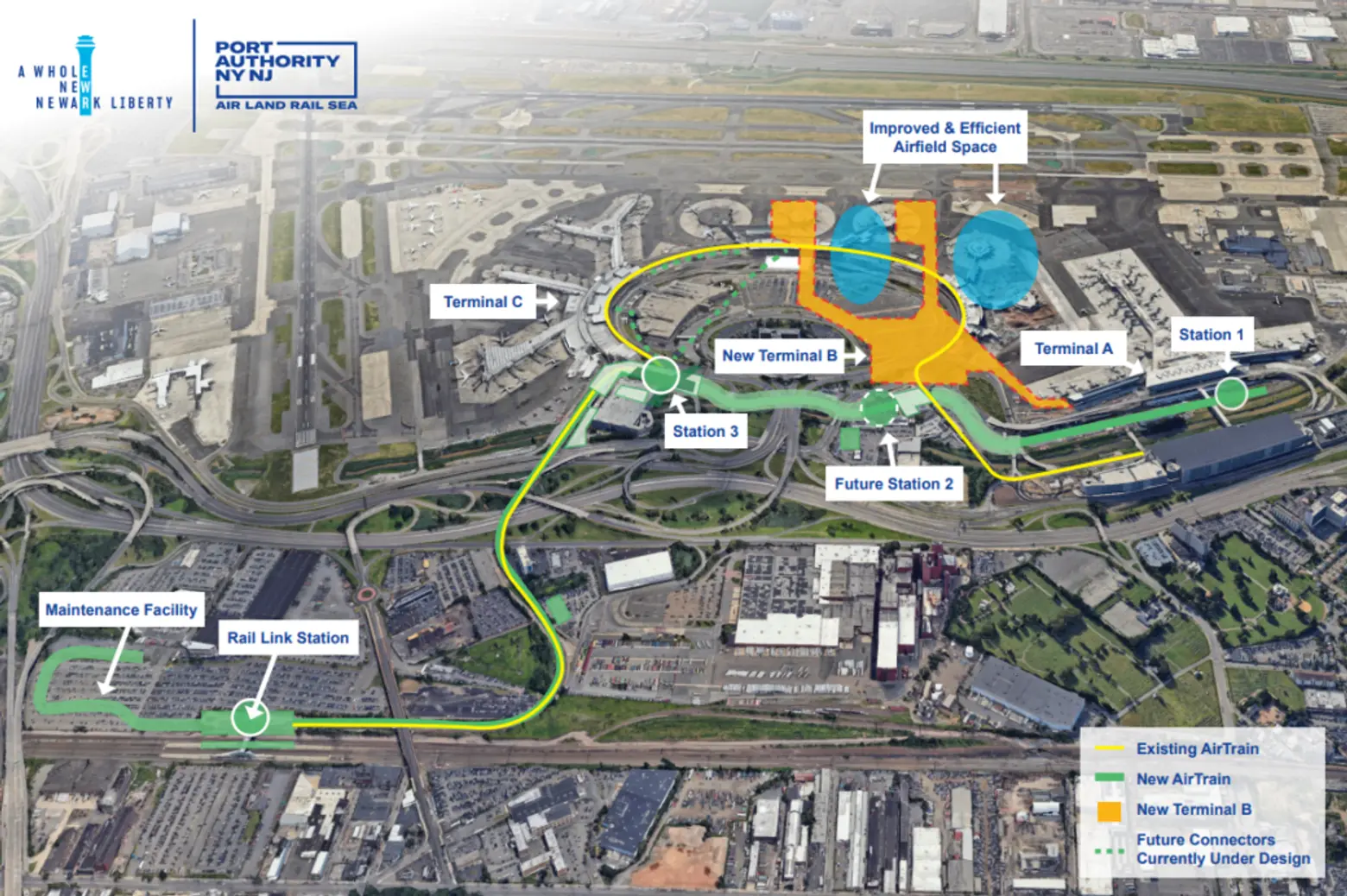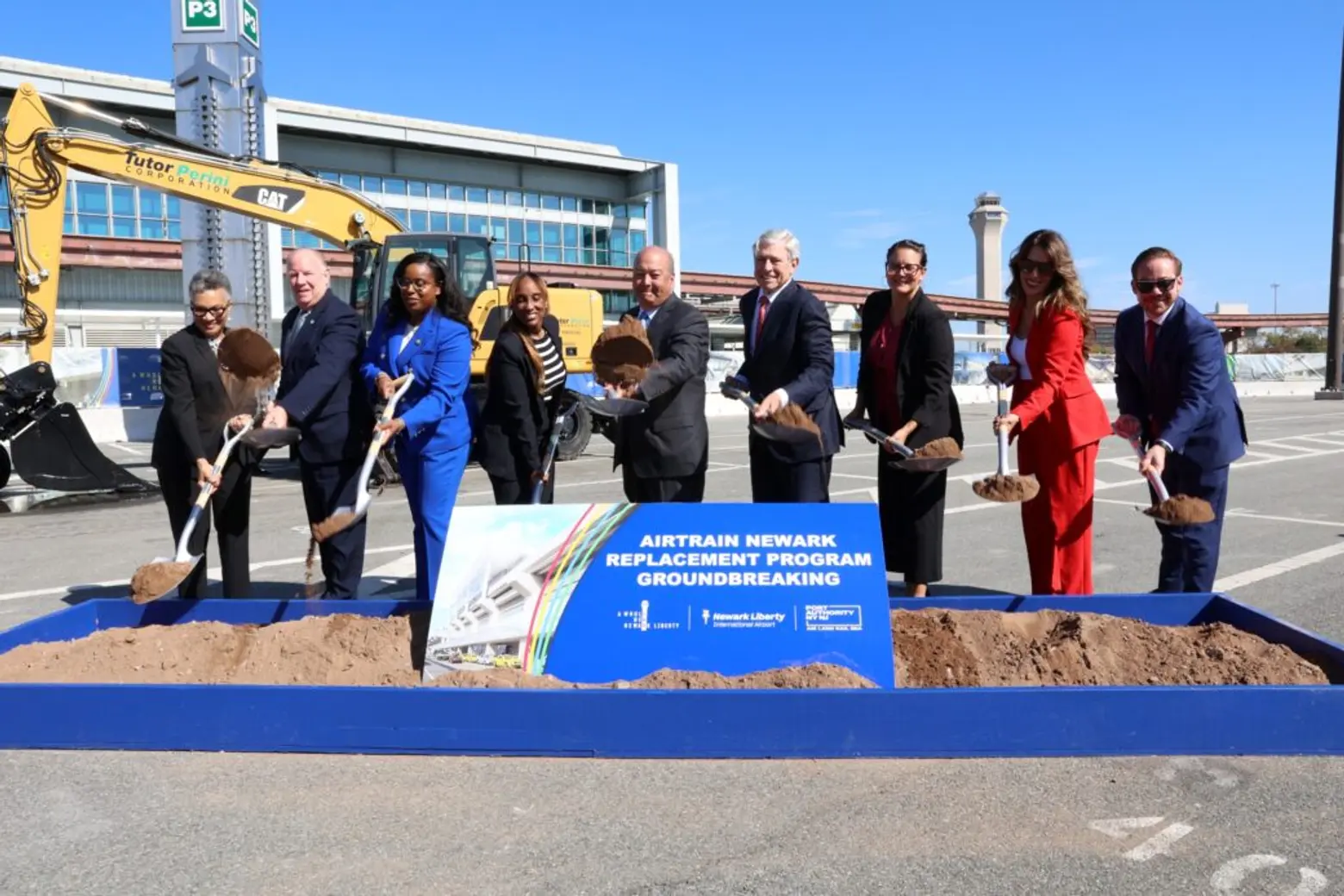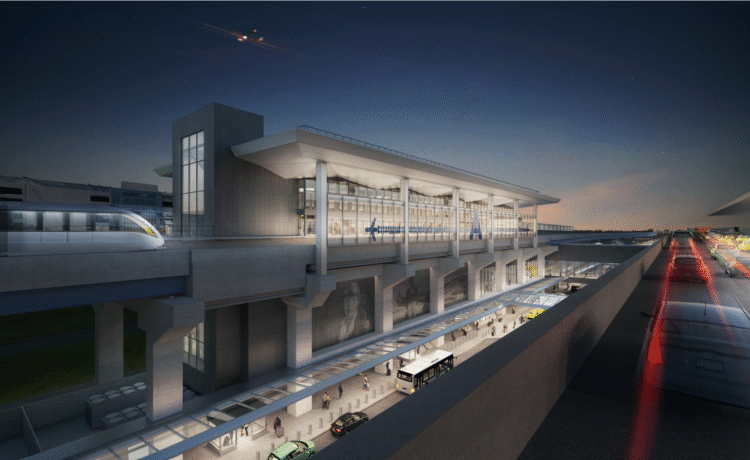
Rendering courtesy of Tutor Perini/O&G
Work has begun on revitalizing Newark Liberty Airport’s aging AirTrain—one part of the larger plan to rebuild the international airport. On Tuesday, Port Authority Chair Kevin O’Toole announced the groundbreaking for the new AirTrain, kicking off a long-awaited refresh of the 1990s-era system that will speed up and improve travel to the airport via public transit. The $3.5 billion project is part of the EWR Vision Plan, a long-term effort to rebuild the airport, including a new Terminal B, upgrades to Terminal C, fixes to the airport’s complex roadway network, and replacement of the AirTrain.

Constructed in 1996, the existing AirTrain is nearing the end of its useful life, demanding constant maintenance and repairs while struggling to accommodate the airport’s growing number of visitors.
When the AirTrain first opened, the airport served roughly 30 million passengers annually. By 2024, that number had grown to nearly 50 million, and ridership is projected to rise another 50 percent by 2040, far exceeding the system’s current capacity.
The current system cannot be expanded or upgraded with modern technology, and its route would limit future airport growth. In contrast, the new AirTrain is designed to be expandable and accommodates plans for future development.
To address these challenges, the new fleet will include seven five-car trains, each carrying 135 to 160 passengers—including luggage—more than doubling the current capacity. Passengers will also benefit from spacious walkthrough cars, aesthetic lighting, real-time signage, and comfortable seating, enhancing the overall travel experience.

Designed and built by Tutor Perini/O&G, the new 2.5-mile system will include three new stations, each connected by pedestrian pathways to existing airport facilities. A 70,000-square-foot maintenance and control facility will support and manage the equipment. The new route will also provide direct access to the new Terminal A, cutting out the current 15-minute walk between the AirTrain station and the terminal.
Ralph D’Apuzzo, senior program director of Newark Development for the Port Authority and one of the engineers behind the AirTrain’s original design, highlighted the system’s upgrades.
“We’re designing not just a transit system, but an experience, with spacious platforms, intuitive dynamic signage, natural light, and local art throughout the three new stations that will be built,” he said. “It’s about functionality and accessibility for every passenger, and a system the region can be proud of.”
A $950 million contract was awarded for the AirTrain project in December 2023, as reported by NJ.com. The project is designed with the EWR Vision Plan in mind, including the new and revamped Terminals A and B.
Revealed in October 2024, the vision plan aims to accommodate the airport’s projected growth while bringing it up to par with the region’s other major airports, LaGuardia and JFK, both of which have undergone significant transformations in recent years.
Under the $19 billion “JFK Vision Plan,” work on the new international Terminal One began in September 2022, while the new Terminal 6 broke ground in February 2023. Other projects linked to the transformation of JFK include the $1.5 billion expansion of Terminal 4 led by Delta and JFK, and a $425 million expansion of Terminal 8, led by American Airlines, as 6sqft previously reported.
LaGuardia has also undergone a modernization following an $8 billion project that began in 2016 and was largely completed by June 2022 with the opening of Delta’s $4 billion Terminal C.
“Breaking ground on a new AirTrain system marks another milestone in the complete transformation of Newark Liberty International Airport into a world-class gateway,” O’Toole said.
“This project is about more than just replacing outdated infrastructure. It’s about building the capacity, reliability, and customer experience that millions of travelers will depend on for decades to come as we complete a top-to-bottom reimagining of Newark Liberty.”
First passenger service is slated for early 2030.
RELATED:








Recent Comments